Individuals often pursue a career in architecture because they enjoy the process of designing, building, and seeing the finished product. The design process involved in the creation of an architecture portfolio follows a similar structure: gather ideas, start the design process, and eventually, end with a finished product you’re proud of. Building an online portfolio is something all architects and aspiring architects should integrate into their professional plans.
Your architecture portfolio website is the one tool that will open up a world of possibilities and allow your work to be displayed to potential clients, employers, or school administrators. Whether you’re a professional architect at a firm working and wanting to attract future clients, or a student just starting out on their career path in the world of architecture, an architecture portfolio is the starting point for establishing yourself as a reliable, professional, and talented architect. While you may be used to compiling your work in PDF format, hosting that work and file on a website will allow you to open the door to new possibilities in the field. The following architecture portfolio tips will explore what makes a perfect architecture portfolio for all stages of your career as an architect, including what elements make a quality portfolio, what items to include, and what type of portfolio design makes the best first impression. These architecture portfolio tips will allow you to create a portfolio website that you’re proud of.
What You Will Need to Include In Your Architecture Portfolio
What you include in your architecture portfolio will depend on what stage you’re at in your career. Someone just starting out will include different content and projects from an individual who has been working for years. Regardless of your career stage, your portfolio should display your best work and be reflective of the project or objective you’re trying to achieve. For example, if you’re looking to attract a client who is interested in designing a new condo building, you will want to include projects and designs that reflect the needs of the client. In other words, include previous successful project examples that are similar to what the client is asking for. If you’re a student, you will want to make sure you have a portfolio template that includes everything that’s outlined in the admission package. In every case, it’s not about the quantity of work you’ve done, but rather the quality of work and the communicating value you’ll bring to the table. The following breaks down what to include in a student architecture portfolio, entry, and mid-level portfolio, as well as tips for the accomplished professional who has been in the business for years.
Student Portfolios
You’re at the very first step in your architecture career journey and your architecture portfolio is continually growing and developing. Whether you’re applying to school, or right in the midst of your studies, having an architecture portfolio as a student is one of the best tools to help you develop your skills, track your progress, advance your career, and eventually, land your dream job or client.
Compiling a Student Portfolio. As a student, and at any stage in your career, it’s not about the volume of work you display, but rather the design quality. Two exceptional projects are better than selecting content that’s not reflective of your best work. If you’re applying to school with a portfolio, make sure to include all elements that are required. This often includes things like a resume, samples of designs, hand drawings, or 3D renderings.
The Massachusetts Institute of Technology (MIT) currently is viewed as one of the best schools in the world for aspiring architects. Applicants must submit a portfolio that includes a resume/CV, and 15 to 20 pages of a variety of work samples. Many students, as well as professionals, will host a PDF published using issuu on their personal portfolio website to display their work. Examples of this can be found on the MIT website.
Let the school know why you’re the best choice. While completing your portfolio, remember to include your name and a brief biography, even if it’s not specifically requested. This will allow the admissions staff to get to know you as a person. During your time in school remember to continually update your portfolio with your best and newest projects. This allows you to track your progress throughout your time in school as well as add new methods of design you’ll learn during your time as a student.

Entry and Mid Level Portfolios
You’re done school and now the purpose of your portfolio has shifted. Whether you’re just entering the workforce, looking to land new clients or attract the attention of a firm to secure a full-time position, the layout of your architecture portfolio at this stage in your career will look a little different than the one you created while in school.
Tailor to the audience. By this point, you’ve most likely narrowed down your focus but still have work that falls into a variety of different categories. The work you include will depend on the client, project, or position you’re focused on securing. Before compiling a portfolio and picking your pieces, do as much research as you can on the client or project you’re looking to secure. Get to know the scope of the work and adjust your portfolio accordingly. For example, if the firm you’re interested in works primarily in commercial real estate, be sure to highlight your best projects that focus on this area.
Showcase versatility. Architecture firms want an employee who’s versatile and able to contribute to a project in a myriad of ways, whether through 3D modeling or creative problem-solving. If you’re having a difficult time picking what to include and exclude, try organizing your work into categories, allowing potential employers to gain a broader scope of your abilities. Don’t be afraid to elaborate on your thought process and the selection behind your designs. This can be done beside or below each design on the page.
Include information about yourself. No matter what position you’re applying for, every complete online portfolio must have a section that allows visitors to get to know you. This page will give you an opportunity to explain your thought process behind your portfolio, explain the impact you plan to make, and how your imagination and training will play a key part in future projects, and how you will get the client the results they want.
Professional Portfolios
You’re an established architect with plenty of projects under your belt. You’re confident in your industry identity with a variety of different successful projects under your belt over the past number of years. You’ve worked with firms, done freelance, brought your personal touch to everything you’ve done. You may have built an online portfolio, but it’s been a while since you’ve had to use one for a presentation or give a full portfolio website to display your work.
Keep it updated. Ensure to keep your portfolio updated with your latest project endeavors. With standards in graphic design consistently changing, it’s important that your portfolio website reflects modern-day architecture portfolios. Continually update your portfolio with your best and latest projects and include images that are eye-catching and to demonstrate you can continue to compete with up and coming architects.
Continue to build your brand. Sell yourself. That’s part of the reason you got to where you currently are in your career. Update your biography page to reflect your current character. Who you were five years ago may not reflect the person you are today. Revisit your contact details frequently to ensure they stay up to date and include projects that reflect your most current style.
It’s never too late. If you don’t have an online portfolio it’s never too late to design one. By this point in your architecture career, you’ve been the mind behind many projects that inspire the next generation. Putting that work on display for the world will allow you to reflect on all that you’ve accomplished to date and provide some clarity on your purpose going forward. With more and more people moving online, having an online portfolio presence will soon be a requirement for everyone in the industry.
Architecture Portfolio Templates For Every Stage Of Your Career
It’s been established what needs to be included when creating a portfolio and now it’s time to get around to designing your site. Although you’re an expert at designing physical structures, you may not be as good at web design, and that’s where Format portfolio templates come in. These simple and clean portfolio sites will provide you with a platform to host all of your projects, display your work, and attract new clients. When you create a portfolio using a Format template, you will be creating a website that’s fully customizable without the need for coding. All portfolio templates have high-quality image rendering and promotional tools, including social media integration, ideal for creating an architecture portfolio. These standout architecture portfolio examples will help provide you with some inspiration as you begin to design your site and are great template options for any stage in your career.
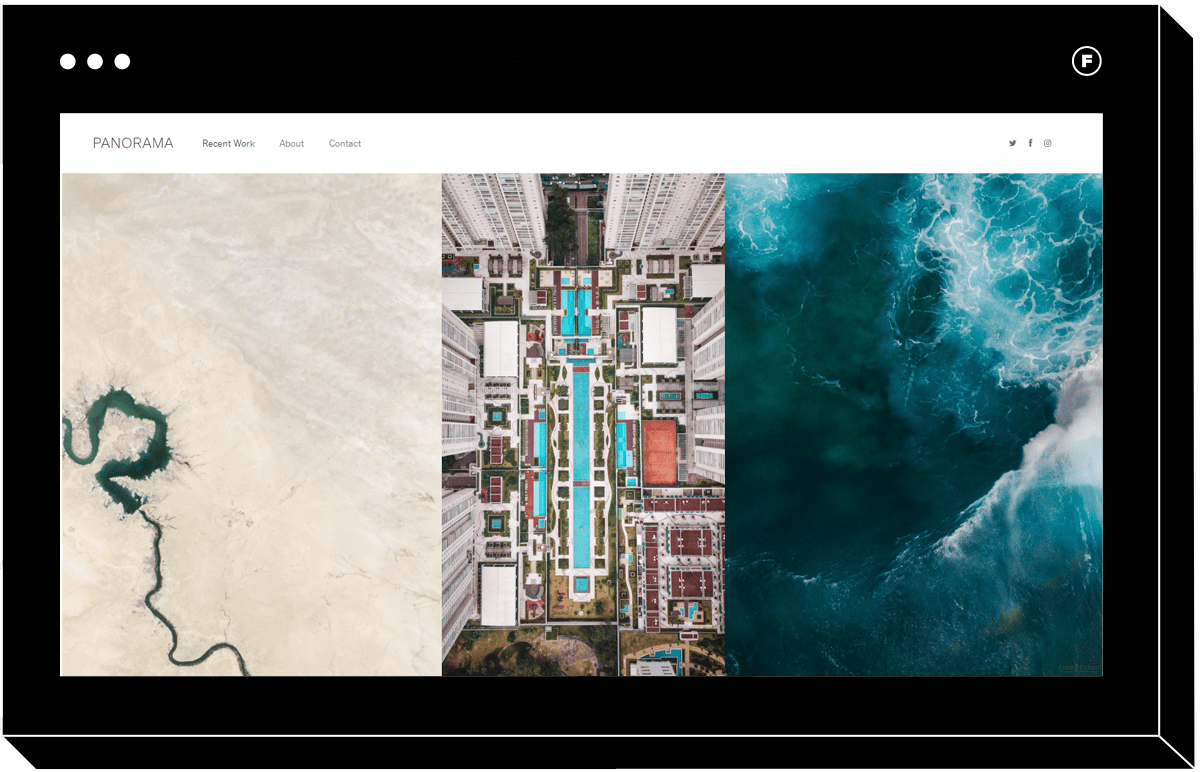
Panorama
The architecture portfolio template offers seamless horizontal scroll galleries with full-bleed images to highlight all your best architecture portfolio samples. The size of your images will not be a factor with this template, as photos are meant to fill the screen without the need for cropping. The horizontal scroll layout of the portfolio allows visitors to get a quick look at your best work before they dive deeper into specific categories outlined in the menu bar. The one-click scroll is also an ideal feature when presenting work on a tablet or touch screen device.
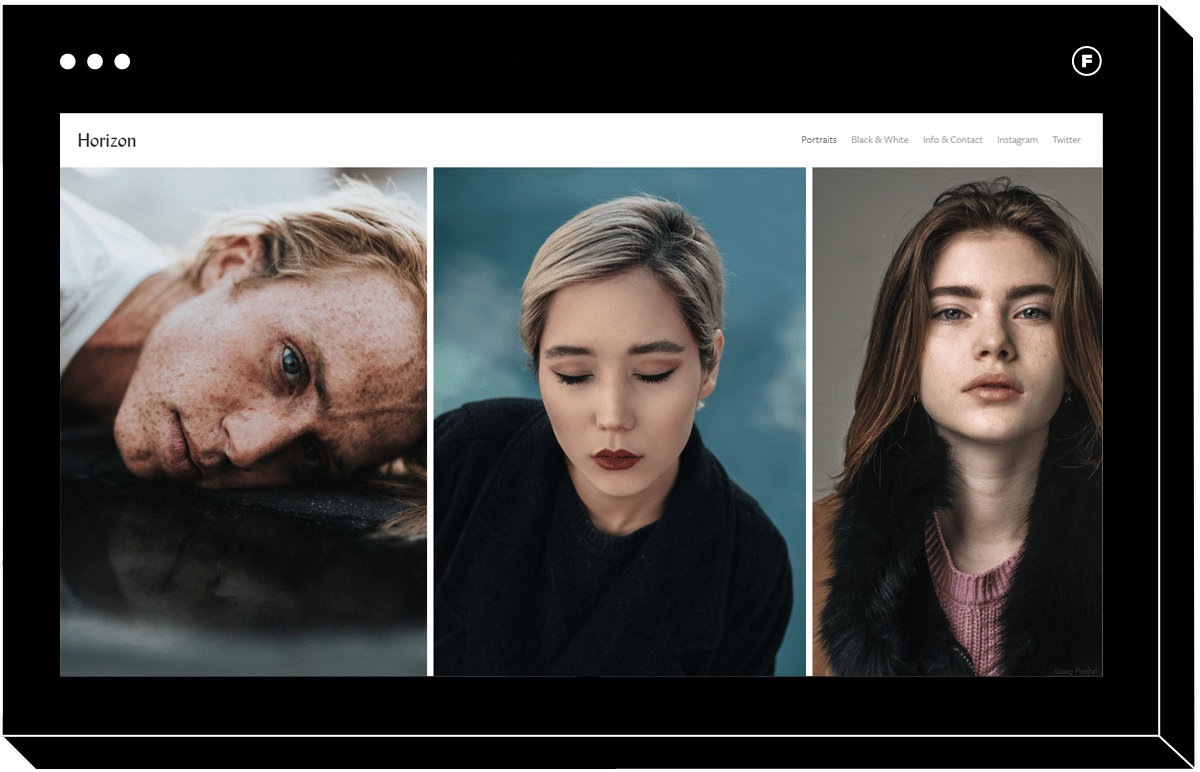
Horizon
Horizon is a template that allows for clean organization and navigation. The full-screen format puts your designs at the front and center without obstructing the menu. Using a minimalistic design, you can categorize projects neatly in the menu and have your work displayed with horizontal scroll galleries. By clicking image captions, visitors are taken to a dedicated project page that elaborates in detail. The template is best utilized by professional architects or firms that have a wide professional range. All themes can be customized to fit your desired branding.
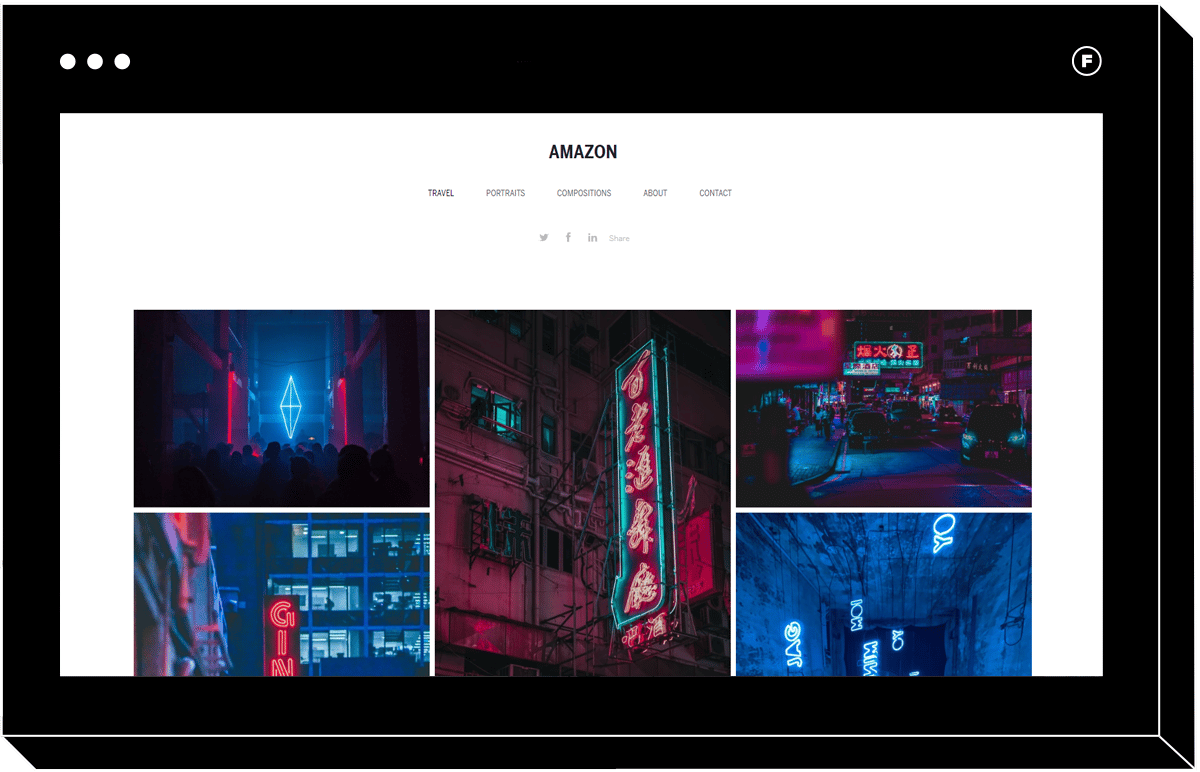
Amazon
The image-forward theme greets visitors with fun energy that portrays professionalism with a sense of modern style. This highly customizable theme allows you to highlight your best work right on your home page. Visitors are greeted by your best work and they can easily navigate through them by clicking each image to enlarge. The size of images can vary based on your preference, gently guiding your visitors to view your best work. Text can be added below the designs or images featured to further expand upon the project process or concept. The sleek and straightforward menu bar allows for easy categorization of different projects, making the selection process for what to include in your portfolio a little bit easier.

Sun
The horizontal scroll galleries offer full-bleed images, allowing visitors to gain the full scope of your work. By positioning the menu bar at the bottom of the page, images or projects remain the focal point of the portfolio. Users can scroll through images via thumbnails or larger photos, putting the navigation into the hands of the visitor. The template gives room for growth, making it a great choice for students and professionals alike.
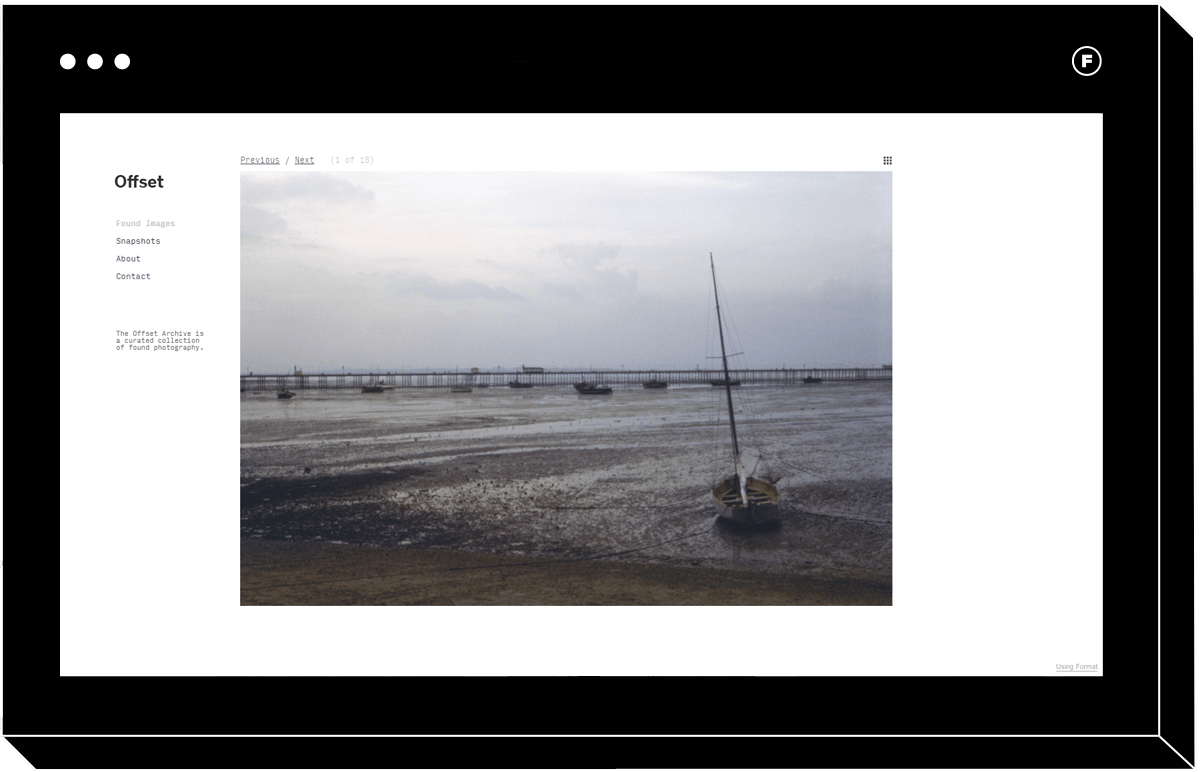
Offset
While tiled themes can be modified to have a colorful energy, they can also be used to present projects in a more structured and simplistic way. You can use a tiled theme to create thumbnails previewing different project examples. The vertical scroll portfolio website offers visitors the ability to navigate through different project categories and designs right from the home page. Images become enlarged once selected and people can browse through the complete portfolio using a slideshow. You can choose to only highlight one to two images per page, which allows for increased focus on singular images or projects.
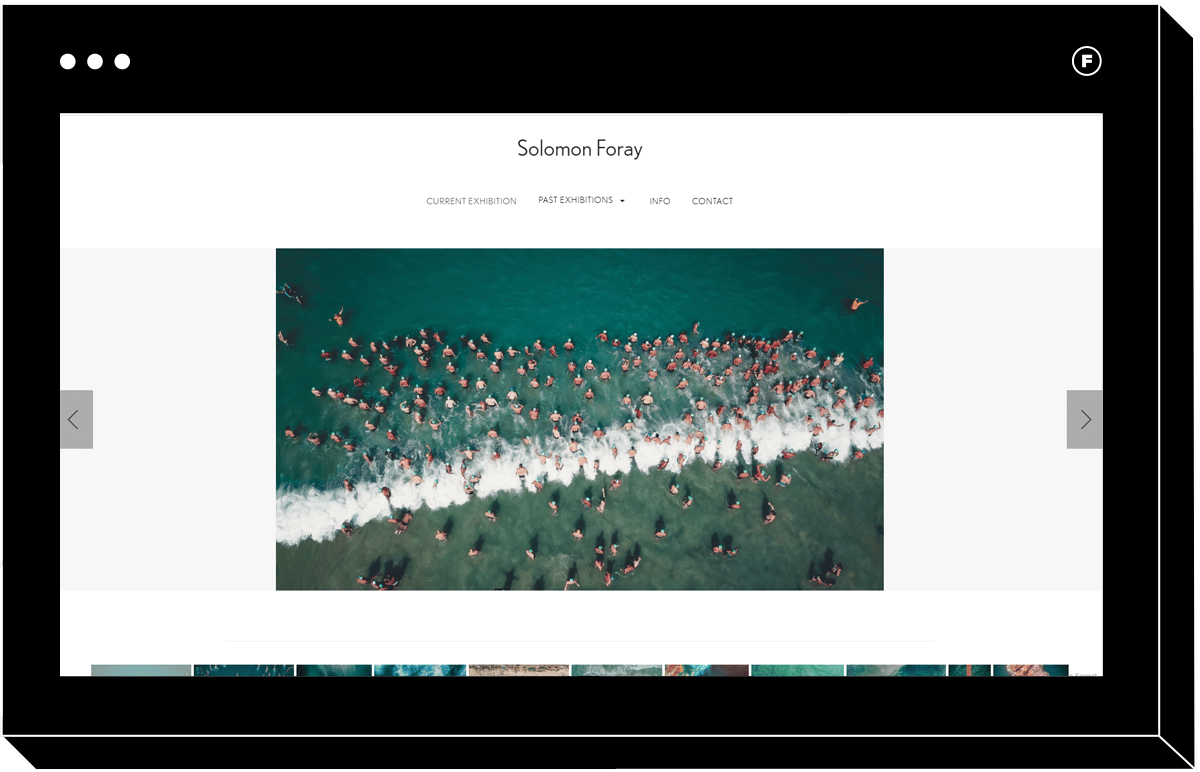
Foray
This slideshow-style design allows you to set an immediate tone for your page. Use this template to create a professional portfolio presentation that creates an instant impression with a full screen branded home page. Once visitors have entered the site, they will see the template’s emphasis on horizontal scrolling galleries. Visitors can browse thumbnails within the gallery and click to enlarge each image. The portfolio website template is ideal for an individual who wants to showcase different styles of work or a large variety of projects. You can also take full advantage of the dropdown style menu to further subcategorize different projects or types of work.
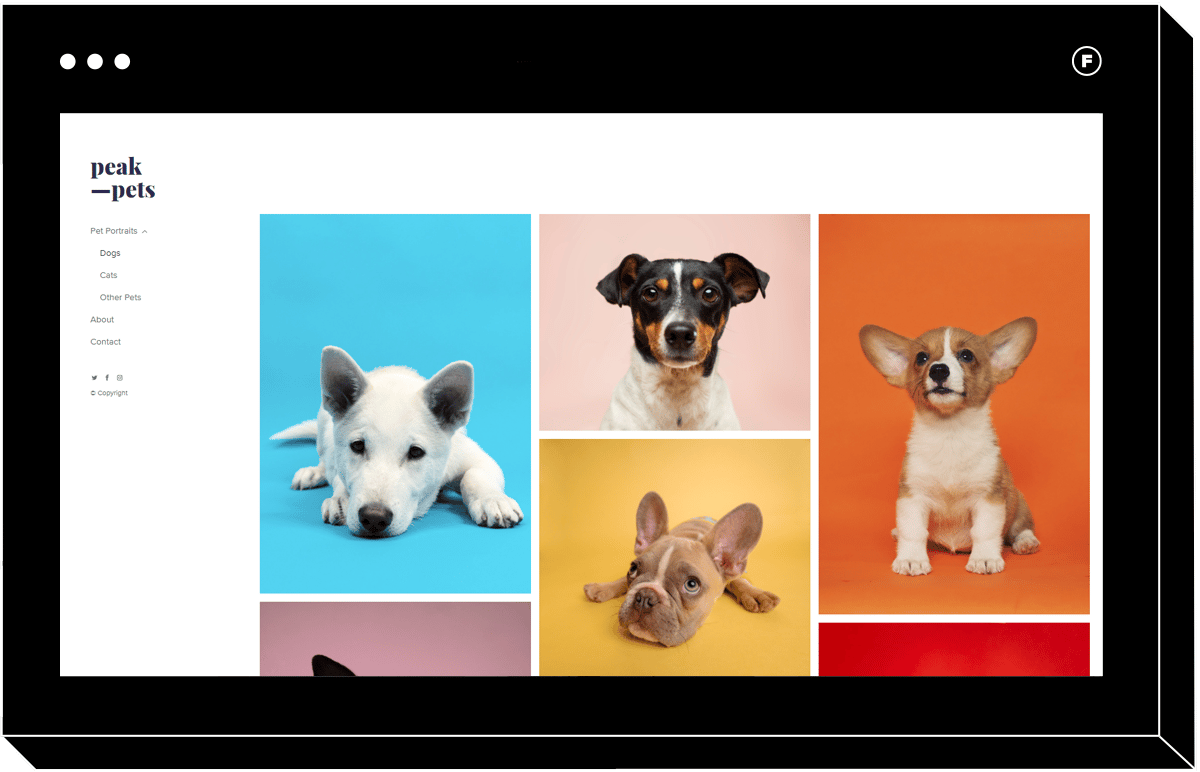
Peak
Peak demonstrates the fully customizable nature of Format sites. Visitors are greeted to the portfolio by an autoplay slide show of high-resolution images of your best work. This format could be tweaked to include different types of graphics such as hand sketches or 3D renderings and not necessarily just photographs. The simple two tone design of the portfolio allows visitors to hyperfocus on your work. The left hand navigation does not distract from the design of the rest of the website and lets potential clients easily identify the scope of work you can offer. Easily organize your projects into galleries to allow for a simplistic and straightforward user experience.
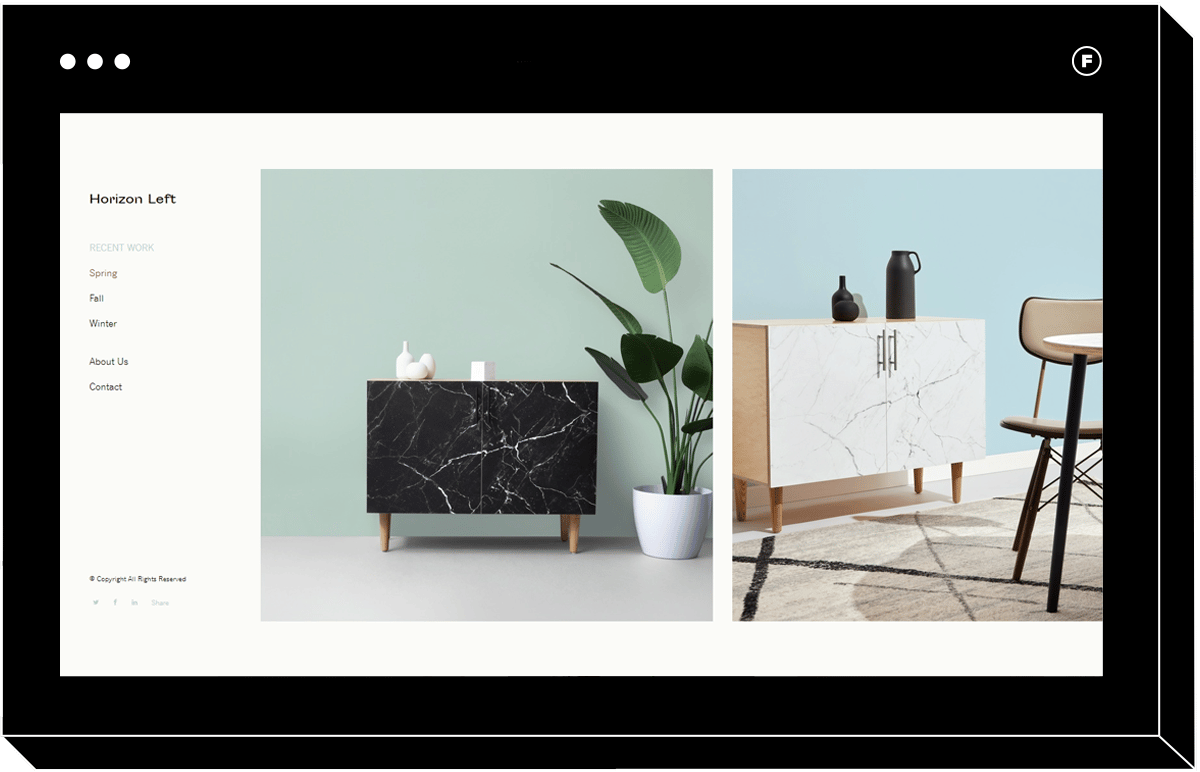
Horizon Left
Showcasing decades worth of architecture work is no easy feat. How do you design a website that organizes years’ worth of work in a way that’s simple to navigate and communicate? You can try using the left-hand navigation in the Horizon Left theme to organize their projects based on category and by decade, starting with the most recent near the top of the menu. When visitors select a decade, they’re directed to a tiled gallery layout that features thumbnails of various projects over the course of a 10 year period. Each project is detailed in-depth with stunning a horizontal scroll gallery, many of which feature a variety of design elements including photographs, 3D models, and sketches. The design of the portfolio is one any accomplished architect would strive for.
Ready to Create an Architecture Portfolio?
Putting together a portfolio for your architecture business is no easy task. With so much noise in the digital space, it’s important to choose the right website template that can best showcase your work. Whether you’re just starting out or you’ve been in the industry for years, make sure you leverage a professional website builder like Format to create a stunning portfolio.
Want to take your portfolio to the next level? Check these articles out:
10 Architecture Portfolios For Design Inspiration
How to Photography Architecture: the Complete Guide
Matthias Jung’s architectural collages bend the mind—and the landscape












